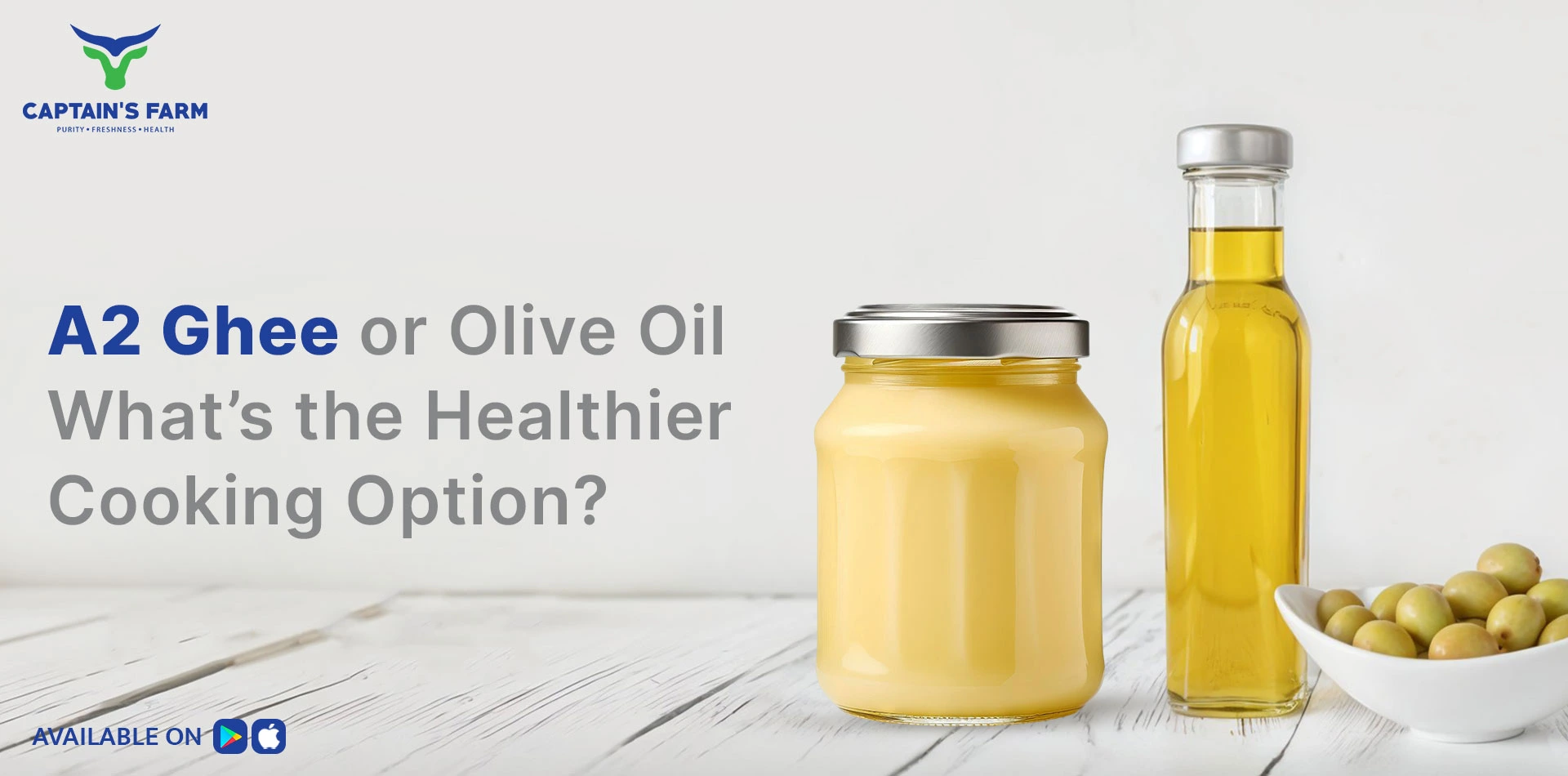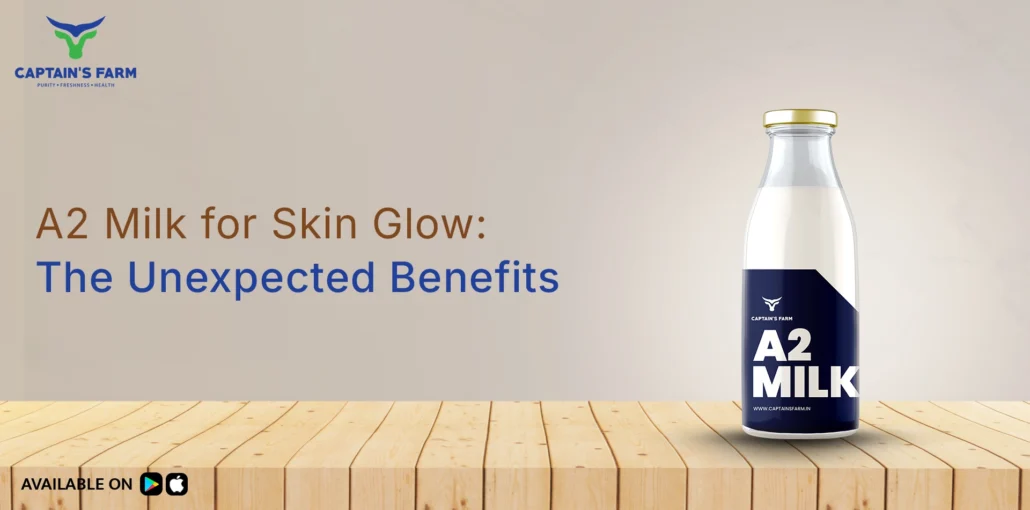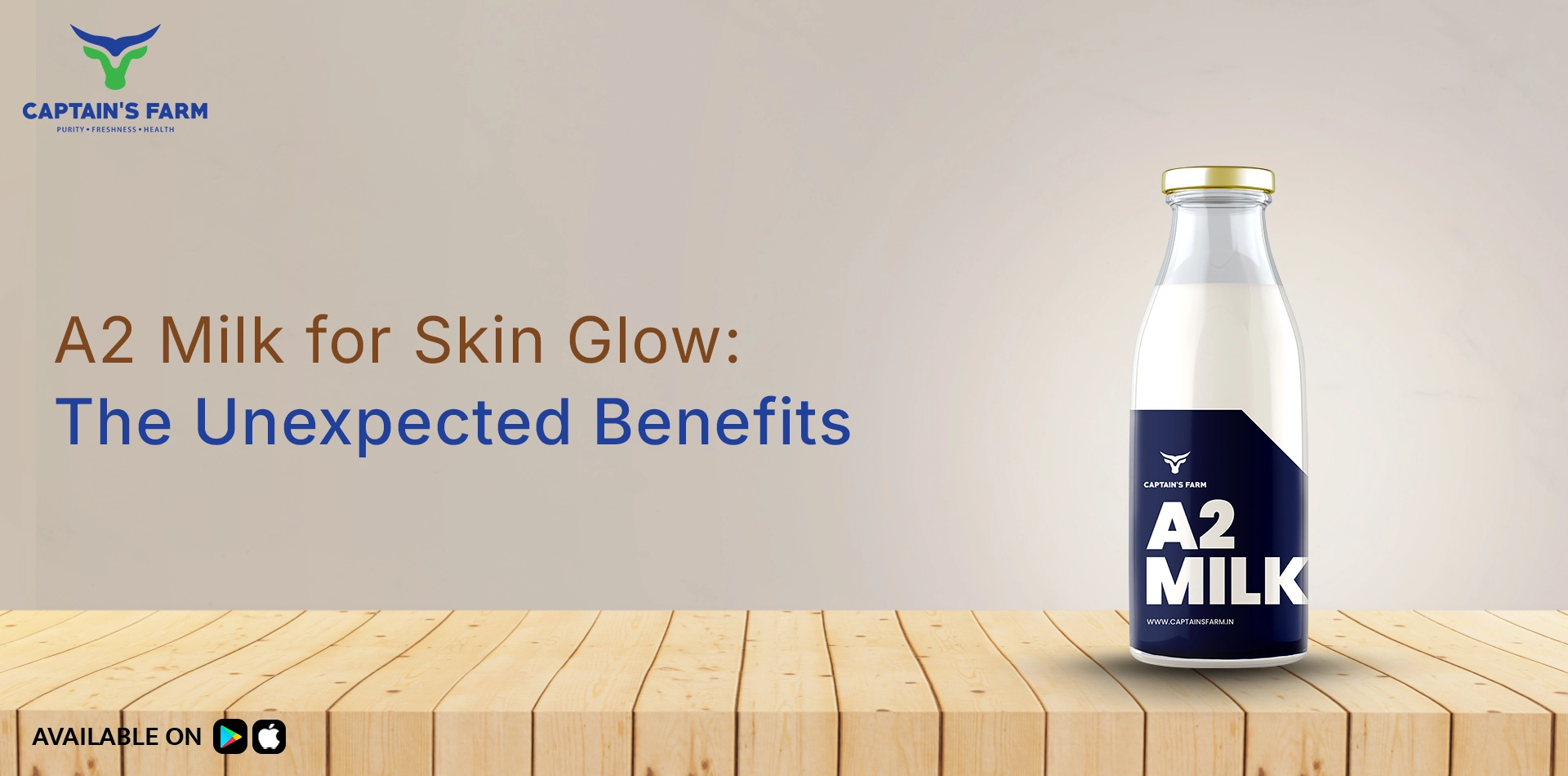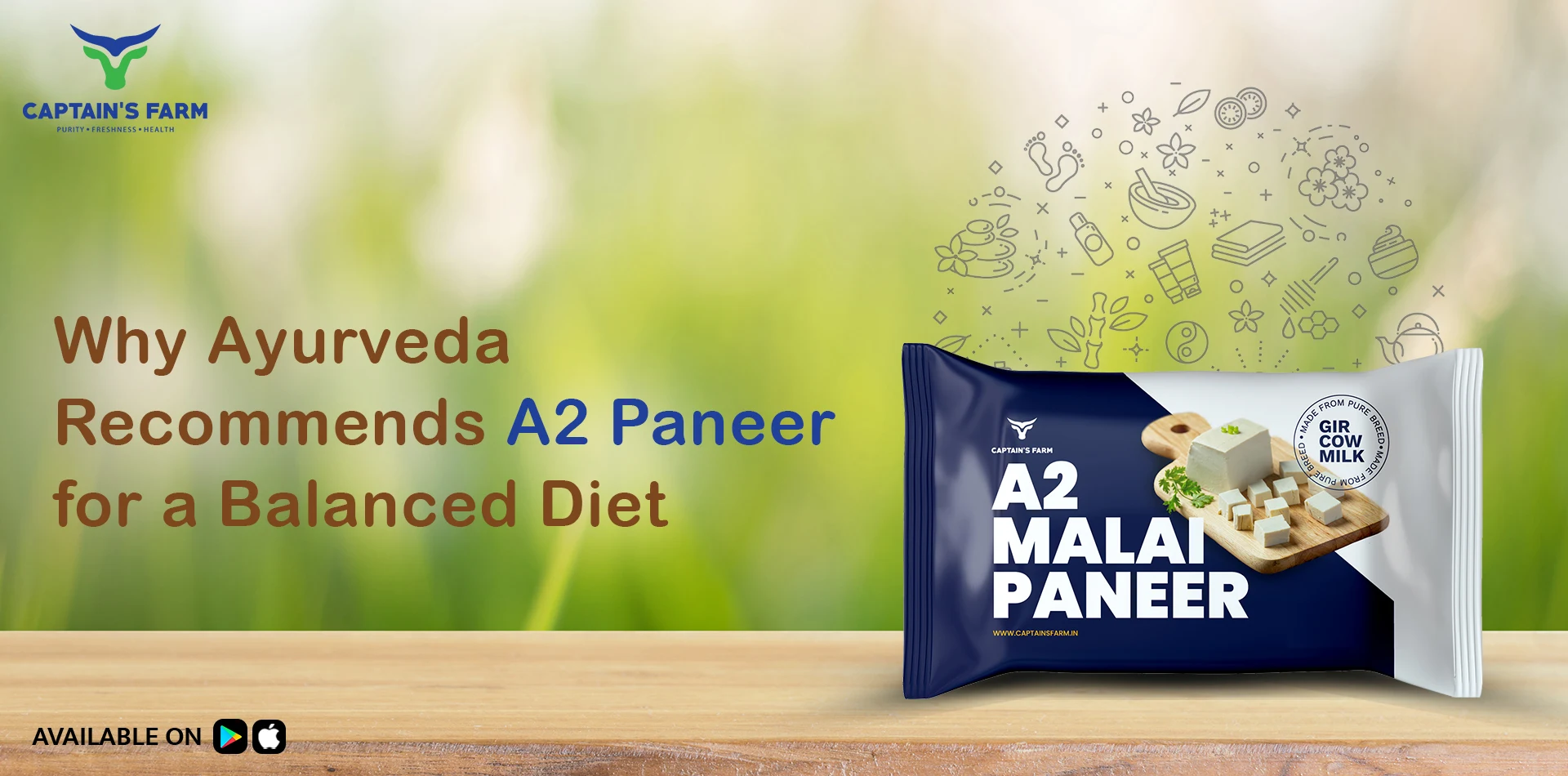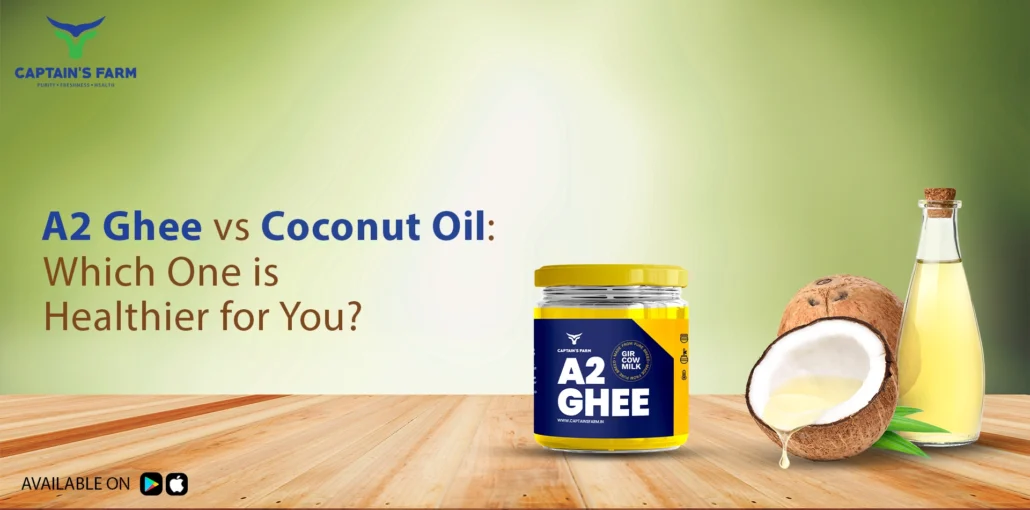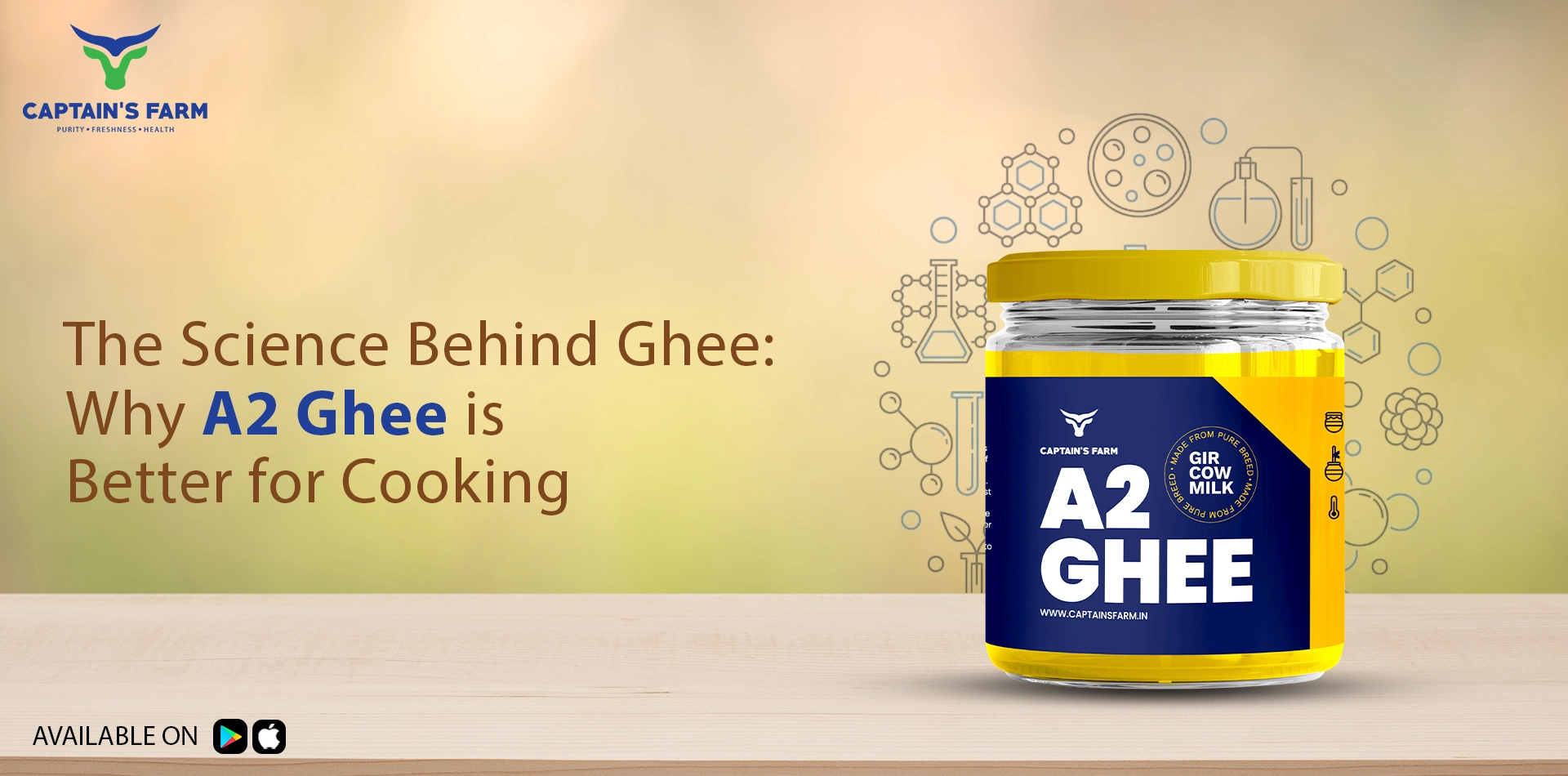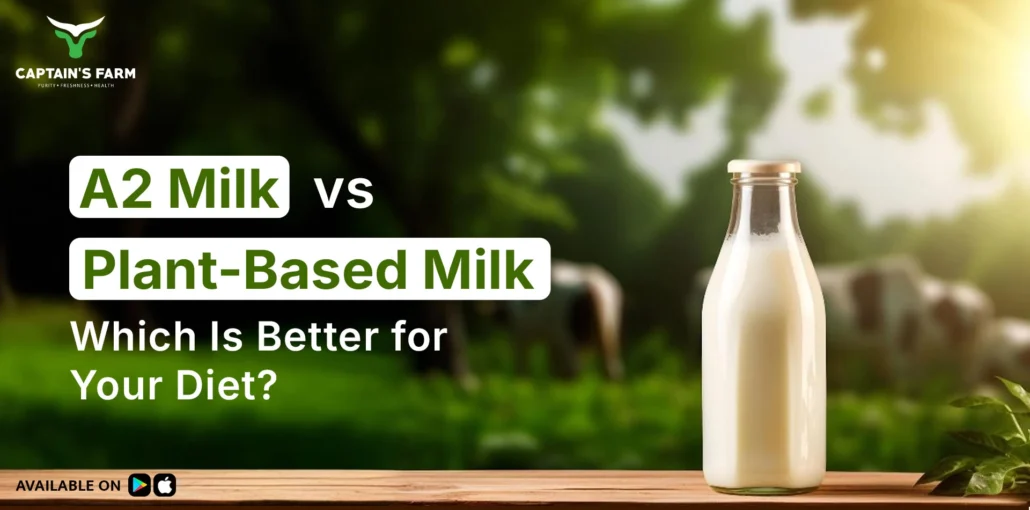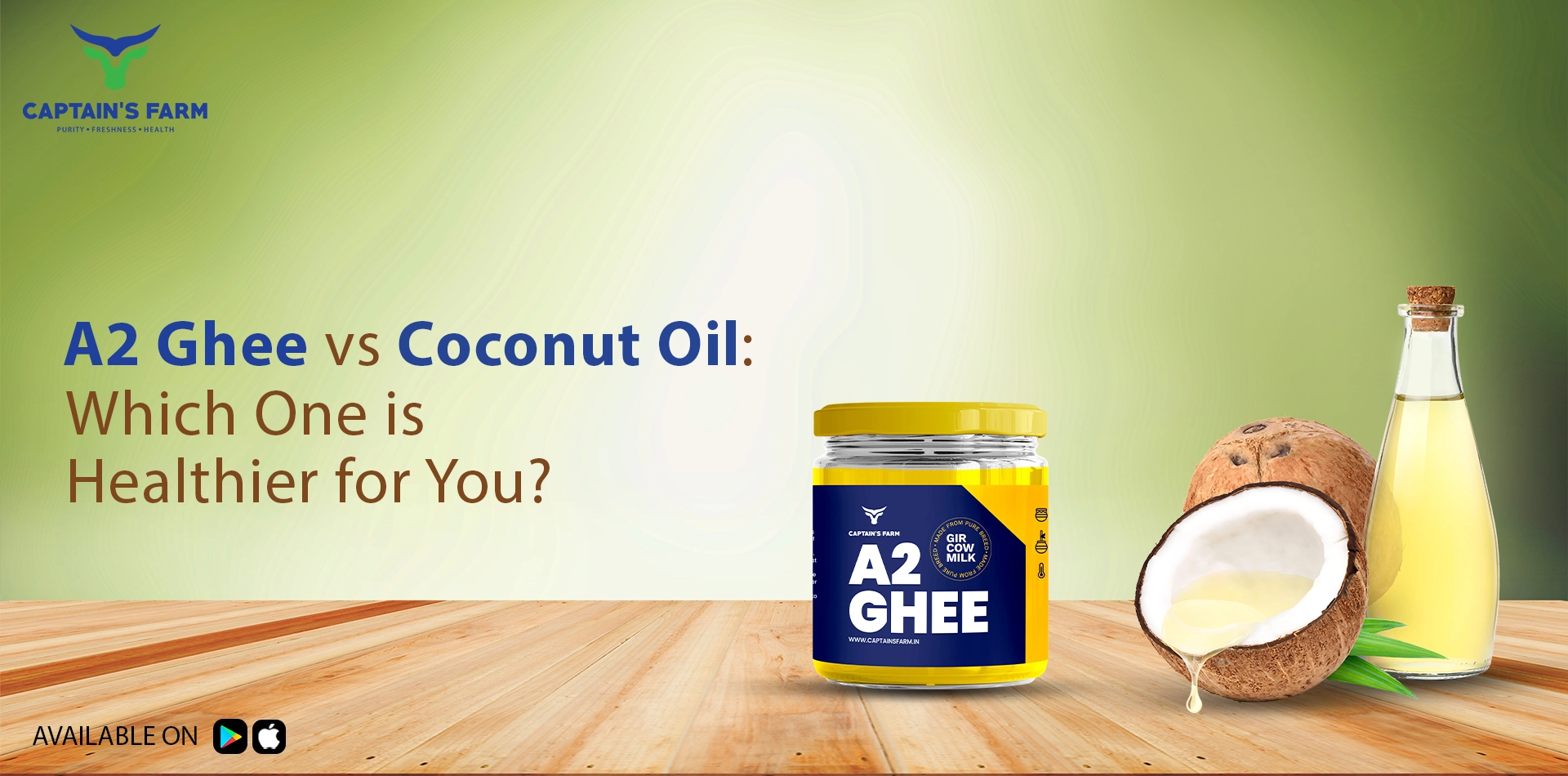Posted by Captain’s Farm

Posted by Captain’s Farm
A2 Milk vs Almond Milk – Which One is the Healthier Choice?
While comparing A2 milk with almond milk, it depends on whether the protein, calories, fat content, or particular digestive issues are concerned. A2 milk is just an all-natural dairy with unique beta-casein protein profile, while almond milk is the plant-based version favored for its really low-cal. This article highlights the comparing health benefits of both and helps in deciding which one is better for you from a dietary point of view.
Key Differences Between A2 Milk and Almond Milk
Protein Content
A2 milk is highly proteinaceous, containing about 8 grams of protein per cup; thus it would be a good option for people who depend on high protein consumption. Almond milk, on the contrary, typically has very little protein and would need to be fortified for protein purposes.
Caloric Value
A2 milk contains more calories, so almond milk is a better choice if someone is monitoring their calories. Therefore, it has gained popularity among people who wish to lose weight.
Saturated Fat Levels
A2 milk contains some saturated fat that comes from dairy products. Almond milk has little or no saturated fat since it is plant-based; therefore, it is a better choice for those who want to limit their fat intake.
Digestive Concerns
Many people who normally suffer from the discomfort caused by regular dairy milk find A2 milk easier to digest due to its beta-casein protein structure. Almond milk, meanwhile, is entirely non-dairy, which makes it a go-to for lactose intolerant’d people.
Nutrient Profile
Milk serves as a pure natural source providing essential nutrients like calcium, vitamin D, and B12. Almond milk, which usually lacks such nutrients naturally, is fortified with them. Choosing fortified almond milk ensures adequate intake of calcium and vitamins.
Health Benefits of A2 Milk
High protein content aids in muscle formation and contributes to health. Contains necessary vitamins-A, D, and B12. It is easier on digestion for the A1 beta-casein sensitive as compared to normal cow’s milk. It provides a natural source of calcium for stronger bones.
Health Benefits of Almond Milk
- Leaning lower calories, it fits well into a regimen for weight control.
- Naturally, it is free from cholesterol or saturated fat.
- The vegan and lactose-intolerant can use this dairy-free alternative.
- Contains plenty of vitamin E for skin support.
Which One Should You Choose?
It depends on what nutritional needs one of the two types of milk will satisfy, each suited for a different individual condition.; A2 milk is for people who require increased protein and essential nutrients. Almond milk offers lower calories in comparison with a zero animal-source alternative. People suffering from lactose intolerance or dairy allergies can opt for an almond variant. A2 milk is gentler on the system and can replace regular milk suffering in the digestive tract.
Conclusion
Almond milk and A2 milk supercharge the body with benefits that are quite different from each other. A2 milk brings much more protein and other elements in it than almond milk, while almond has fewer calories in most cases, making it light compared to the cow’s milk. The final call of milk might depend on which is preferred diet-wise, needs nutritional value, or is easily digested by the particular individual.




